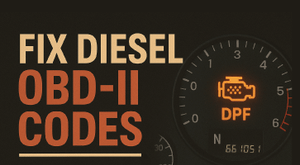Why I've learned to love my Automatic Transmission
By on Apr 13 2016

As a young driver, the only thing I knew about transmissions were that they were costly to replace.
I still remember my dad coming home after a long Sunday afternoon of hard work saying: "it's the transmission," with an unambiguous look of defeat in his eyes. Yet, when his manual '91 Nissan was back in action, he was like a kid on Christmas. He would say:
"You gotta learn to drive stick." But I never did. In fact, I gave up pretty promptly following my first lesson.
Yet, aside from being the butt-end of the occasional joke courtesy of my high school girlfriend's father, I was never too beat up about not being able to drive stick-shift. I readily conceded that I was less than a real man...but I still couldn't understand why I'd take the extra time to learn how to operate a manual transmission, especially considering I drove an automatic.
Many years have passed and I'm still trying to figure it out what I've been missing; I love my automatic transmission, and I don't care who knows it! As such, I felt it necessary to explain the inner-workings of these outstanding examples of machination and innovation.
Perhaps the single-most complex component of your automatic vehicle, the automatic transition is generally comprised of several mechanisms:
First and foremost: the gear sets.
1 st gear, 2nd gear, 3rd gear, etc. We all know what a gear is — but how do they work? These gears are responsible for transmitting the necessary power to your wheels, thus powering your vehicle. Similar gears are found in Manual transmissions but you have to switch between them yourself: hence the shifter!
Second: the hydraulic system.
In order to switch back and forth between gears automatically, a hydraulic system is needed to provide the necessary lubrication and power. These components make the automatic transmission a great deal more complex than manual transmissions. Considering the hydraulics present in the engine component, the auto transmission essentially requires a specially-formulated hydraulic oil, commonly referred to as an ATF, found here. The pump responsible for transferring the lubricant throughout the transmission first draws oil from a reservoir. Next, the hydraulics pressurize the in-compressible oil which inputs the required force to operate a transmission.
Third: the Torque converter
Taking place of the clutch that is used in manual transmissions, a torque converter is designed to transfer power. These allow for much easier transitions for "stop-and-go" driving commonly experienced in the city. It also keeps your engine running, maintaining the current gear instead of stalling.
Fourth: the computer
Most modern automatic transmissions are powered by a computer. The computer monitors and reads various information from the above components, and keeps tabs on engine temperature and other important fluctuations in engine components.
While, certainly, each of these components may be further broken down and examined, I've operated my automatic vehicle under a blanketed understanding that ignorance is bliss — these components are designed to work extremely efficiently and for a long time. That's why they're so expensive!






